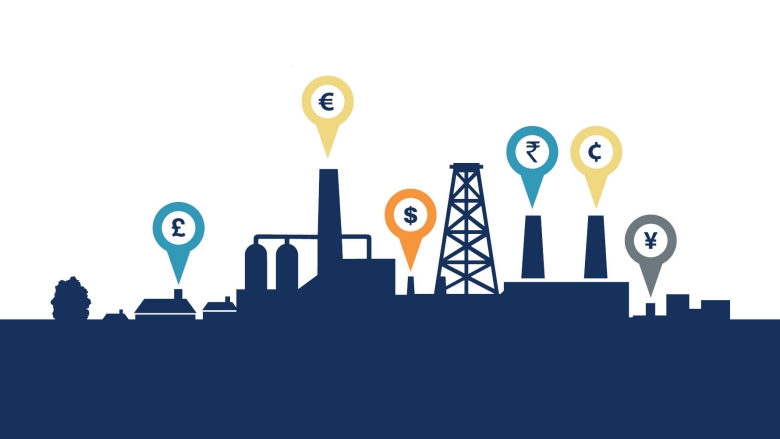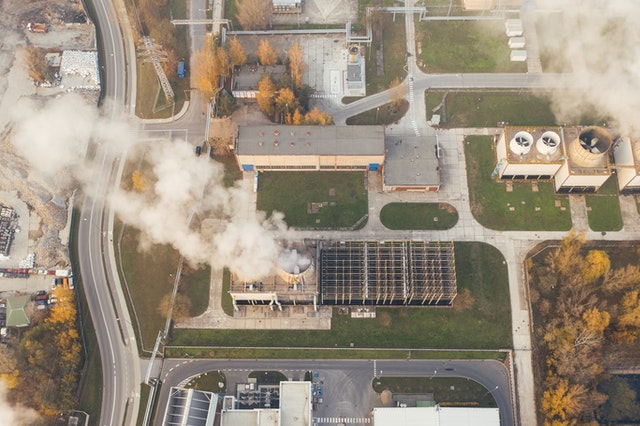Hospitals are racing to create as many isolation rooms as possible to help effectively care for patients with COVID-19 while keeping healthcare providers and others in the hospital as safe from infection as possible.

Airborne Infectious Isolation (AII) Rooms
Airborne Infectious Isolation (AII) rooms, sometimes called “negative air” or “negative pressure” rooms are those that are maintained at a negative air pressure to all adjacent spaces. Their purpose is to keep contagions inside the room and prevent their spread by exhausting air from the room directly outdoors and away from people. The engineering requirements for these rooms are typically governed by ASHRAE Standard 170, which prescribes the following:
- Acceptable temperature and humidity in the space
- Number of air changes per hour (ACH)
- The types and locations of required air filtration
- The type and location of the supply and exhaust registers in the space
- The location of exhaust air discharge
- All exhaust ductwork must be under negative pressure within the building
- These spaces must maintain their negative pressure upon a loss of normal power
These requirements are a lot to think about at a time when so many other critical things demand the attention of hospital staff, and when reviewing possible candidates for conversion to isolation rooms, decisions must be made quickly. A complete engineering analysis will likely not be possible, at least initially. While temporary equipment can be used to increase air changes and HEPA filter the exhaust, these are short term measures and only address airflow capacity.
AII Rooms vs. Standard Inpatient Spaces

Some key differences between AII rooms and standard inpatient spaces include:
- AII rooms require 12 ACH (air changes per hour), standard patient rooms require 6
- AII rooms require all room air to be exhausted to the outside
- ASHRAE 170 allows the use of in-room recirculating units to increase ACH in existing facilities, but they must be HEPA filtered
- AII rooms must be maintained a pressure of least -0.010 inches of water column (IN WC) to adjacent, communicating spaces
Challenges of Converting Standard Spaces to AII Rooms
We find ourselves, at least in the northeast, at the beginning of spring. The outdoor weather conditions are prime for economizing, imparting no real impact on an air handler’s ability to cool or dehumidify; however, this is potentially the calm before the storm. As weather warms and the outside air becomes more humid, the cooling coil in an air handler that serves a converted space will likely not be able to keep up. The equipment simply wasn’t designed for the added ACH or the additional OA (outdoor air) required.
If the existing air handling equipment can be ramped up to deliver the ACH required, its capacity to cool and dehumidify the air may still be inadequate. On a design cooling day, the outdoor air can have somewhere between 30% and 35% more energy in it than return air from the space. That’s energy that must be removed via the cooling coil.
Recommendations for Increasing Cooling & Dehumidification Capacity

In order to remove this additional energy, you will need more cooling and dehumidification capacity. Absent a coil replacement, the following measures are available to increase cooling capacity:
- Chilled water coils:
- Increase the flow (GPM) through the coil
- This is limited to the available pumping capacity, both from a flow and head pressure perspective as well as the acceptable maximum velocity through the cooling coil.
- Increased flow works to a certain point and then becomes nothing but an energy waste. Go slowly and measure the progress.
- Lower the chilled water supply temperature
- You can typically go down to about 38 deg F with a conventional chiller.
- This reduces the capacity (the tonnage) of the chiller. If you run at peak capacity on your chilled water plant, do this measure cautiously. You may need to be prepared to shed load elsewhere during hot humid weather.
- Drive your condenser water temperature as low as possible. Lowering the condenser water temperature to a water-cooled chiller increases its efficiency and can slightly increase the chiller’s tonnage. You can often run as low as 55 deg F without a problem. Consult the manufacturer of your chiller for specifics. Older machines are limited to higher minimum condenser water temperatures.
- This measure typically isn’t available on a design cooling day due to the increased humidity in the air at that time.
- DX (direct expansion or refrigeration) Coils – unfortunately there is not much that can be done with a packaged, DX coil to increase its capacity.
- Other Measures: If you have the power available, you can add supplemental cooling to the AHU or pre-condition the OA to the AHU. This is usually most easily done with a DX coil and dedicated air-cooled condenser. Adding and/or replacing chilled water coils is a possibility but the latter requires downtime and either of those options means more load on your chiller plant.
- Increase the flow (GPM) through the coil
As it becomes apparent that we in the US will be living under this new paradigm for a number of months to come, it will be important for facilities directors, managers, and staff to take a look at the equipment serving converted spaces and review its capacity, taking corrective measures as soon as practical.
Keep an eye out for Part Two of this series, where we’ll discuss the challenges of increasing airflows to these spaces.


